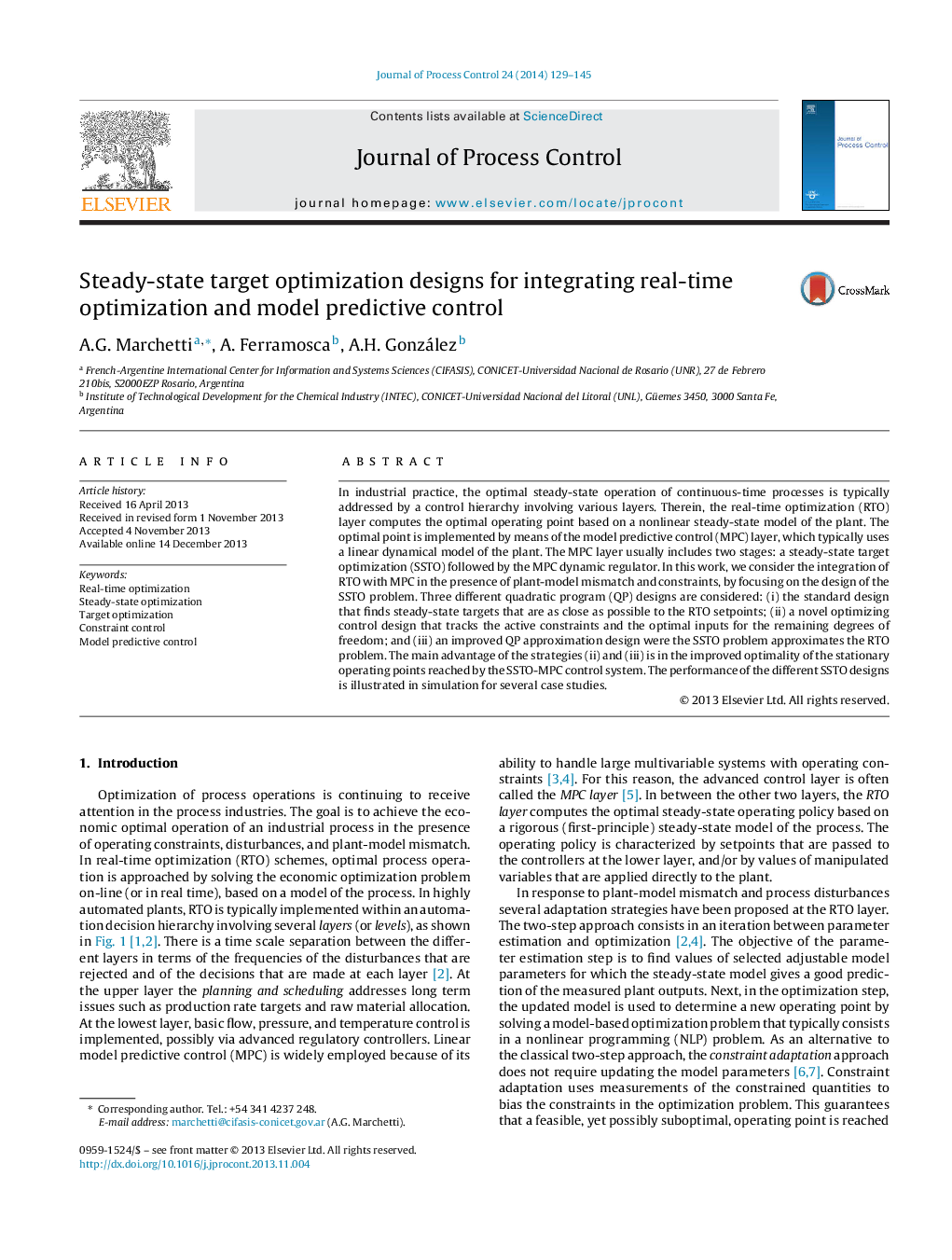| کد مقاله | کد نشریه | سال انتشار | مقاله انگلیسی | نسخه تمام متن |
|---|---|---|---|---|
| 688974 | 889583 | 2014 | 17 صفحه PDF | دانلود رایگان |
• Integration of real-time optimization (RTO) with model predictive control (MPC).
• Three different steady-state target optimization (SSTO) designs are studied.
• SSTO designs are based on information provided by the RTO solution.
• SSTO can be designed to approximate the RTO solution.
• SSTO designs are compared using different optimization and disturbance scenarios.
In industrial practice, the optimal steady-state operation of continuous-time processes is typically addressed by a control hierarchy involving various layers. Therein, the real-time optimization (RTO) layer computes the optimal operating point based on a nonlinear steady-state model of the plant. The optimal point is implemented by means of the model predictive control (MPC) layer, which typically uses a linear dynamical model of the plant. The MPC layer usually includes two stages: a steady-state target optimization (SSTO) followed by the MPC dynamic regulator. In this work, we consider the integration of RTO with MPC in the presence of plant-model mismatch and constraints, by focusing on the design of the SSTO problem. Three different quadratic program (QP) designs are considered: (i) the standard design that finds steady-state targets that are as close as possible to the RTO setpoints; (ii) a novel optimizing control design that tracks the active constraints and the optimal inputs for the remaining degrees of freedom; and (iii) an improved QP approximation design were the SSTO problem approximates the RTO problem. The main advantage of the strategies (ii) and (iii) is in the improved optimality of the stationary operating points reached by the SSTO-MPC control system. The performance of the different SSTO designs is illustrated in simulation for several case studies.
Journal: Journal of Process Control - Volume 24, Issue 1, January 2014, Pages 129–145
